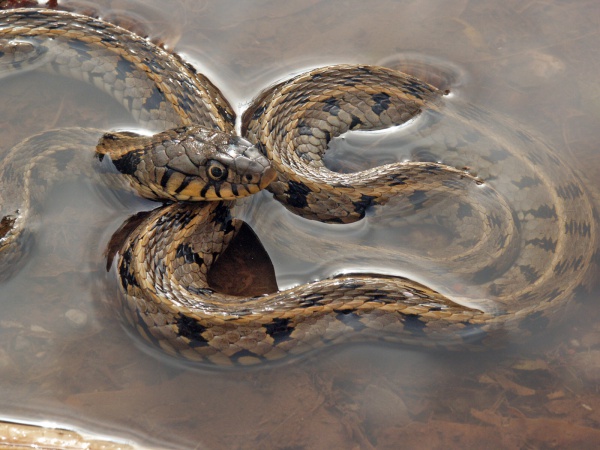Facts About Grass snake
The grass snake, also known as the ringed snake or water snake, is a harmless, non-venomous reptile found across Eurasia. These snakes are often seen near water since they primarily feed on amphibians. In 2017, scientists recognized the barred grass snake, Natrix helvetica, as a distinct species. Usually, grass snakes are dark green or brown and feature a distinctive yellow collar behind their heads. They are widespread across mainland Europe, the Middle East, and northwestern Africa.
Grass snakes exist in various subspecies and thrive in habitats close to freshwater, such as open woodlands and the edges of ponds. To survive the winter, they hibernate underground where temperatures remain stable. During the breeding season, males bask in the sun to warm up for mating, while females lay their eggs in clusters. After about 10 weeks, the independent young hatchlings emerge.
Although they mainly consume amphibians, grass snakes occasionally feed on ants and larvae. They are excellent swimmers and may travel to find food. Like other snakes, grass snakes periodically shed their skin in a process known as ecdysis or molting. To defend themselves, they can produce a garlic-smelling fluid, play dead, or engage in aggressive displays.
Despite facing threats from various predators, the grass snake is protected by wildlife conservation laws in some areas. In Baltic mythology, the grass snake is revered as a sacred animal and a symbol of good fortune. Ancient Romans also wrote about the grass snake, describing it as a large, fearsome creature inhabiting marshes.
Grass snakes play a crucial role in their ecosystems and hold unique cultural significance. Their intriguing behaviors, habitat preferences, and mythological ties make them a fascinating species to study.

 Poland
Poland